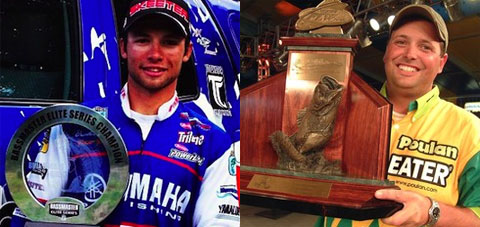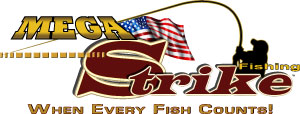Why ‘Water Type’ Is Key for Patterning
2 Water Type Lessons
This year Brandon Palaniuk won the Bassmaster Elite Series event on Bull Shoals, MO. It was a lake he’d never fished before – so how could he have possibly won a tournament there fishing against some of the best anglers in the world, many of whom had fished that lake before?
Two words: Water Type.
BassGold classifies every water body by type, and this year BassGold has shown conclusively that “water type” can be most – sometimes even all – of what you need to know when it comes to fishing a lake.
It’s shown that if you know, for example, any on of the Red River or the upper Mississippi River or the California Delta, you can fish those other rivers.
But the water bodies don’t need to be that far apart. That example only makes the strong point that waters of the same type fish way more similarly than many modern anglers now believe. That’s why BassGold is such a powerful tool.
One example: If you know like lakes fish similarly, and you know what BassGold says about similar lakes, you’ll be way ahead when you hit lake (or river) X.
Back to Brandon: He’d never fished Bull Shoals, and he won by finding the all-important “something different.” How’d he do that? Couple of things, one of which was that he knew “upland reservoirs” from his time fishing in Idaho, notably his favorite lake: Couer d’Alene. He was comfortable on them, knew what to look for, had confidence that things he’d do would work, etc.
Not only did that give him a starting point, that knowledge and approach also gave him a distinct advantage – because he wasn’t looking at Bull Shoals just as Bull Shoals, he was looking at Bull Shoals as an “upland reservoir.” That category has more possibilities – more powerful possibilities – than any single lake.
Lesson #2: Andre Moore on Beaver
In April 2002, the FLW Tour visited Arkansas’ Beaver Lake. It was shaping up to be a sight-fishing fest, just like it had been in prior years. Arizona pro Andre Moore won it sight-fishing – and beat sight-fishing aces like Clark Wendlandt and Dean Rojas. The key was western lake experience.
Here’s what BassFan reported at the time:
He noted that Beaver is similar to Shasta and Oroville, two California lakes where he honed his sight-fishing skills. “Shasta and Oroville are deep, clear lakes and they have the three species of bass, just like Beaver. So although I wasn’t familiar with Beaver, my history on those California lakes really helped me.”
While most competitors concentrated on finding bedding bass in traditional spots, such as coves, Moore said that his California experience has taught him to look on “outside banks” instead of inside coves and pockets when sight-fishing.
“I’ve found that outside fish, those that live out on the main lake, are usually better-quality fish and less-pressured than fish back in the obvious spawning pockets,” he said. “On clear lakes like Beaver, fish don’t need to migrate a mile back into a creek to spawn. They just pull up on the bank and do their thing.”
With BassGold, now we know that Beaver, Shasta and Oroville are in fact the exact same water type: “upland reservoir.” That’s what Andre knew, and that’s why he was able to put together a unique pattern and win that tournament.
The ONLY way to begin to take advantage of all of that patterning similarity – as well as the patterns pros and local sticks have found – is with BassGold.
Hope that helps explain just one of the many benefits of this unique tool.
Category: 1_BassGold tips, Analysis, Elite Series, FLW Tour






